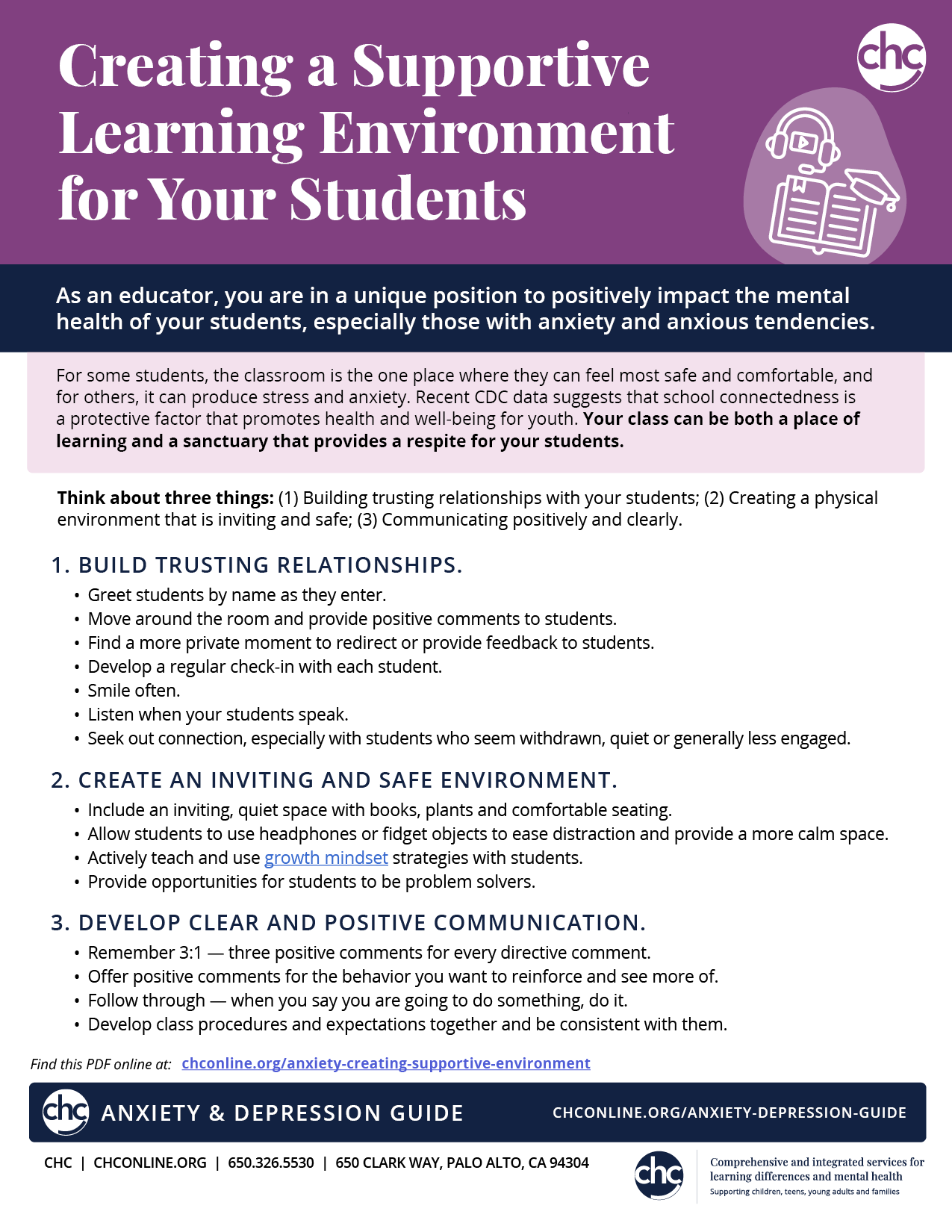As an educator, you are in a unique position to positively impact the mental health of your students, especially those with anxiety and anxious tendencies.


written by Micaelia Randolph, EdD, MA
Educational Consultant

reviewed by Erin Hoolihan, PsyD
Licensed Clinical Psychologist
For some students, the classroom is the one place where they can feel most safe and comfortable, and for others, it can produce stress and anxiety. Recent CDC data suggests that school connectedness is a protective factor that promotes health and well-being for youth. Your class can be both a place of learning and a sanctuary that provides a respite for your students.
Think about three things: building trusting relationships with your students, creating a physical environment that is inviting and safe, and communicating positively and clearly.
Create a Supporting Learning Environment
Download a copy of this tip sheet so you’ll have it at hand whenever you need it.
1. Build trusting relationships
- Greet students by name as they enter
- Move around the room and provide positive comments to students
- Find a more private moment to redirect or provide feedback to students
- Develop a regular check-in with each student
- Smile often
- Listen when your students speak
- Seek out connection, especially with students who seem withdrawn, quiet or generally less engaged
2. Create an inviting and safe environment
- Include an inviting, quiet space with books, plants and comfortable seating
- Allow students to use headphones or fidget objects to ease distraction and provide a more calm space
- Actively teach and use growth mindset strategies with students
- Provide opportunities for students to be problem solvers
3. Develop clear and positive communication
- Remember 3:1—three positive comments for every directive comment
- Offer positive comments for the behavior you want to reinforce and see more of
- Follow through—when you say you are going to do something, do it
- Develop class procedures and expectations together and be consistent with them
This resource is part of CHC’s Anxiety and Depression Guide.
Download Creating a Supportive Learning Environment for Your Students. See CHC’s Anxiety and Depression Guide for more resources on this topic.









